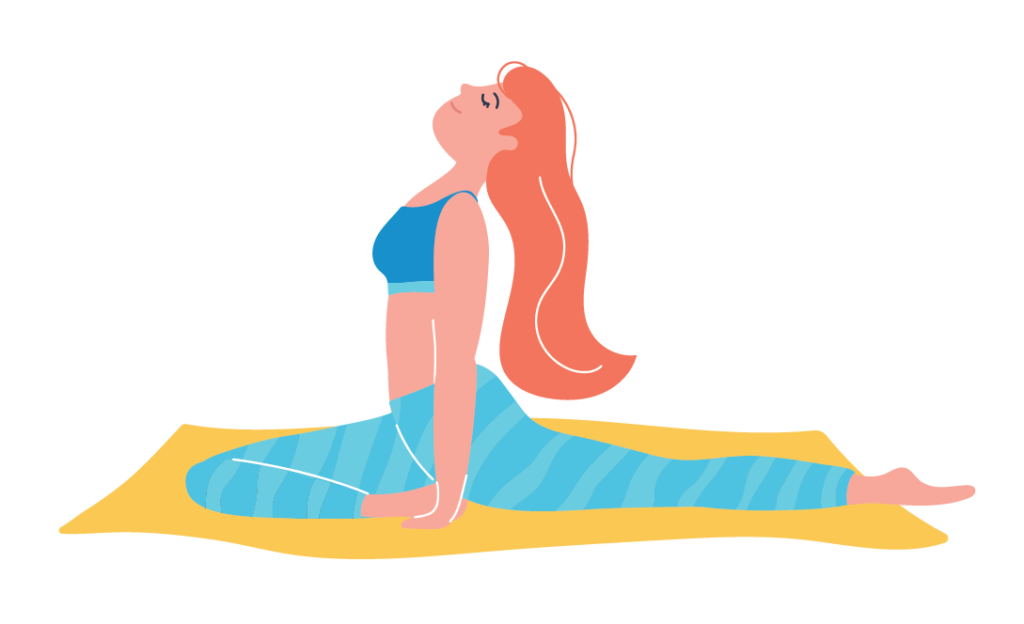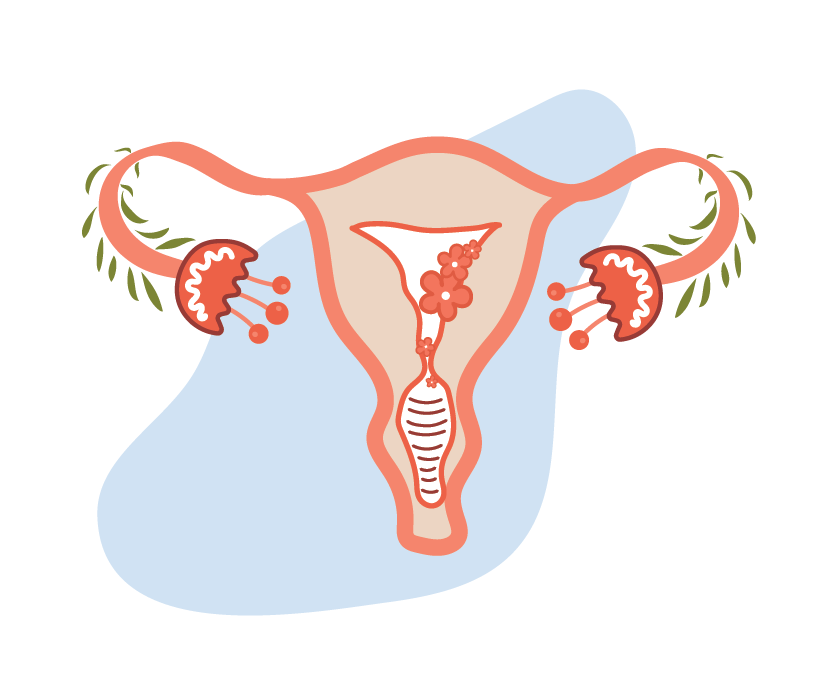Do you feel overwhelmed at the thought of having, or potentially being diagnosed with, Endometriosis or Adenomyosis?
Well, you are definitely not alone. In fact you have 190million other people to relate to around the world, and it’s likely there’s more of us out there. In this post we will introduce different practices you can try to Live With Endometriosis, Adenomyosis and pelvic pain by tackling symptoms with a multi-disciplinary approach from different angles of our lives.
This blog post is for general informational purposes only and should not be taken as medical advice. Always consult with your healthcare provider before starting any new treatment.
Trust me, I know all too well of the feelings of overwhelm, isolation, fear and uncertainty. I was diagnosed in 2009 after my first investigative laparoscopy at aged 21. Back then (gosh that makes me feel a little old saying that!) not many people had heard of the word ‘Endometriosis’ let alone understood how it could affect one’s life. Boy we have come a long way since then! Just the sheer increase of education globally, and lack of having to explain what the word means, has taken a huge chunk of pressure off and stress out of living with Endometriosis and now (diagnosed aged 27) with Adenomyosis, another condition we need to talk about a lot more.
Initially it can be daunting. But after some time you may find incorporating changes and breaking habits bit by bit, it can all soon become the norm. This is certainly how I have learnt to live my life as I do, trial and error and trial again over many years. It is possible to reclaim a comfortable and happy life whilst living with Endometriosis or Adenomyosis. You can even achieve a pelvic pain free existence, with the right management of different techniques for your body.

Physical techniques
- Yoga- there are many forms of yoga that can be beneficial to a body managing pain or a body free from pain. Stretches in yoga that can release tension in the hips, pelvic region and lower back are helpful to relieve pain in that area. We’ll discuss yoga options in a more detailed blog post, soon.
- Walking & swimming- low impact and calm exercise is great to tackle symptoms of Endometriosis, Adenomyosis & pelvic pain. The blood will flow and promote healing, reducing inflammation and hopefully, increase quality of life. Long walks in the forest, short walks near the beach or around the block, even a stroll around the shops as slow as you need to, it can all have a positive impact to move and get blood flowing.
- Pelvic Physio- they use a fascinating mix of physical manipulation and other techniques such as breathing and stretches that focus on releasing the tension in the muscles surrounding the pelvic floor. I found this particularly helpful after surgery, but it can be beneficial no matter what stage of your wellness journey.
- Meditation & breathing exercises- these techniques help calm the nervous system and therefore lower stress hormones, boost your immune function resulting in a reduction of inflammation and increased cognitive function. Incorporating meditation and deep breathing into your daily routine can also have significant benefits on your mental health.
- TENS Machines – these fab little devices can provide relief by sticking small electrodes on your lower abdomen to reduce pain signals to the brain. TENS (Transcutaneous electrical nerve stimulation) uses a mild electrical current to achieve this. It is very safe and effective if used as advised by your practitioner.
However, if any activity causes or increases pain or discomfort, it’s best to avoid it for the time being.
Practitioner support
- General Practitioner- your first point of call with any medical condition. You can discuss your symptoms and request a referral to a Gynaecologist with a special interest in Endometriosis or Adenomyosis. You can also request scripts for pain relief and also a referral for a pain management plan if the issue has been ongoing for a long period of time.
- Gynaecologist- if your GP has advised you may need an investigation into an Endometriosis or Adenomyosis diagnosis, look for a Gynaecologist who has a special interest in Endometriosis or Adenomyosis with a long history with laparoscopy surgery via excision. This is most important, as not all Gynaecologists are equipped with the learnings to correctly remove Endometriosis lesions, adhesions & scar tissue.
- Pelvic pain specialist- as the name suggests, these practitioners look at your overall circumstance and help form a plan to reduce chronic pain in the body. Look for one when you find that you can’t get relief from pain via all other avenues we have covered.
- Dieticians- dieticians focus on diet and how you manage symptoms by what you fuel your body with. They can offer nutritional supplements and advice on diet and lifestyle.
- Naturopaths- with a more holistic approach to health, naturopaths look at alternative ways to manage pain and symptoms. This can be via food, exercise, nutritional supplements and even the administration of herbal remedies to support the body in healing.
Medication /supplements
- Non-steroidal anti-inflammatory drugs (NSAIDs) and Hormone therapy or Intrauterine devices (IUDs) that release hormones can also be used in treatment to help ease the pains and symptoms of Endometriosis, Adenomyosis & pelvic pain. Refer to your GP or Gynaecologist for advice here.
- Natural supplements- including CBD oil, teas, herbs, oral and IV vitamins & minerals, can all support our body in fighting the symptoms of Endometriosis, Adenomyosis in the form of pelvic pain. There are an abundance of natural remedies that can be paired with modern medicine options to get the best outcome for your symptom management.
Other
- Heat therapy- a wonderful, non-invasive, no-energy-required treatment that can have instant effect and can be used almost anywhere.
- Diet changes- anti inflammatory diet, low FODMAP, Mediterranean diet, gluten free, dairy free, low sugar diets there are many options to incorporate, or reduce, to help manage symptoms. Remember, what we put in our bodies can have an effect on how we look on the outside, and this is no different to how our body can react on the inside. We’ve talked about an anti inflammatory diet here, and will share more information on the other diets over the coming months.
- Acupuncture- Acupuncture is an old Chinese medicine technique that uses tiny needles to promote movement and healing in the body. You’ll find you may not necessarily have needles places in your pelvic region, but other pressure points in your body to promote good Qi (or Chi) in the energy field in your body.
- Talking- to a Councellor, friends, family or a support group. Sometimes carrying a burden, especially when it’s related to pain, can be all consuming. So sharing this struggle with others can be beneficial to know we have support and also to know we aren’t alone. Also, it’s a great way to find out what others do to manage their conditions, so we may learn something new along the way, as well as make connections with people who really understand us.
- Stress management- some may think it’s an old wives tale but stress really is our bodies’ worst enemy. Chronic stress can affect us many ways including increasing inflammation, unbalancing our hormones and lowering our tolerance to pain. Not ideal when you have chronic pelvic pain, no thanks Endometriosis & Adenomyosis, and you’re trying to break that cycle.
So, although it does take a team and commitment, it is definitely worthwhile exploring options to see what your body responds to best – it’s amazing what we can achieve when we are pain-free or having a low pain day, compared to the ill effects of daily pain. It has taken me two weeks to write this blog post due to my chronic pain being all consuming. But with a combination of techniques listed above, today is a good day and here we have an article to show for it!
This support platform has been created to offer a range of options across all lifestyle sectors to empower you to take on this journey with confidence, contentment and hope. There are numerous options to explore when navigating a life with Endometriosis, Adenomyosis & pelvic pain. As always, seek professional medical advice when considering any treatment option.
If you have your own tips or experiences, please share them in the comments below!
Take care,
Claire x

